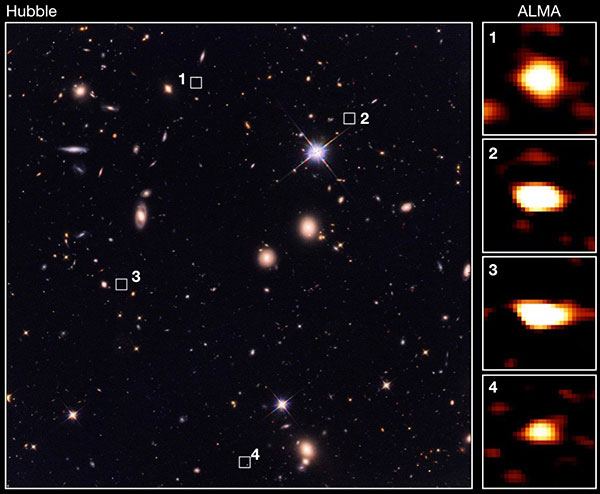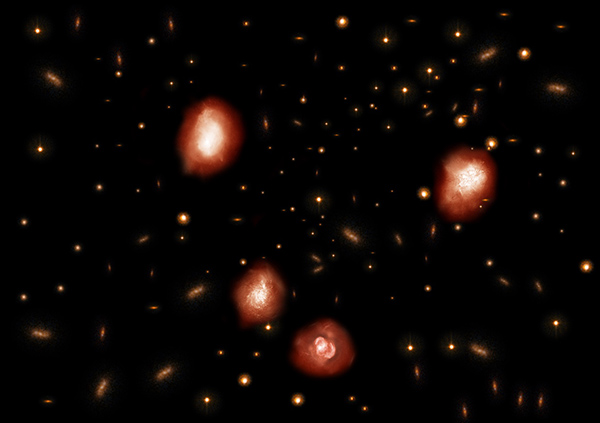News
University of Tokyo and NAOJ Capture Early Galaxy from 11 Billion Years Ago Updated in October 2019
Researchers at the University of Tokyo and the National Astronomical Observatory of Japan (NAOJ) recently announced that they found 39 galaxies dating back to 11 billion years ago. These galaxies could not have been observed by conventional telescopes used to capture visible light. The observation was conducted by the ALMA (Atacama Large Millimeter/submillimeter Array) Telescope in Chile. With wavelengths that are longer than visible light, ALMA can capture submillimeter waves. Results were published in Nature dated August 7.
Astronomers around the world had used many different telescopes to reach out to the universe by observing the past state of the universe, and to discover newborn galaxies or galaxies that give life to new stars. One prime example is NASA’s Hubble Telescope. It is able to observe the universe from outer space and it has been sending many spectacular astronomical images of the galaxy back to the Earth.
However, the Hubble looks at the universe with visible and near-infrared rays. Light from galaxies and infrared rays get absorbed by cosmic dust and cannot reach the Earth nor the Hubble Telescope. Prof. K. Kohno (University of Tokyo, Graduate School of Science, Institute of Astronomy) and Dr. T. Wang who is also a Special Appointed Researcher at NAOJ thought that it is necessary to observe submillimeter waves that have longer wavelengths than visible light, near-infrared or infrared rays, using the ALMA Telescope.
The team targeted their observation to the CANDELS (Cosmic Assembly Near-infrared Deep Extragalactic Legacy Survey) Field, situated in the middle of three constellations: the Sextant, the Fornax (the Furnace) and the Cetus (the Whale). From this CANDELS Field, the team had identified 63 celestial objects not captured by Hubble but captured by NASA’s Spitzer Space Telescope. They further observed them in detail using ALMA’s submillimeter wave. While Spitzer is capable of capturing intermediate infrared rays, suited for observing distant objects, its resolution was low. Details of those celestial bodies were still unclear.
Prof. Kohno’s team was able to detect submillimeter waves from 39 celestial bodies out of the 63 by using the ALMA Telescope. As a result of analysis, it was discovered that the 39 bodies were huge galaxies which existed more than 11 billion years ago. In this giant galaxy, stars were actively generated, and the mass of galaxy was 10 billion-100 billion times that of the Sun. The size of this celestial body is about the same or a little smaller than the Milky Way Galaxy which includes our solar system. The speed in which stars are born is estimated to be 100 times more than the Milky Way. During the long evolution process of the universe, these celestial bodies are believed to develop into a giant ellipse-shaped galaxy made up of old stars.

The universe came into existence 13.8 billion years ago after the big bang. Therefore, 11 billion years ago is quite close to the beginning of the universe in spatial time scale. At that time, it was believed that huge galaxies which actively generated stars could not have sustained themselves so much. Therefore, the observations made this time has brought about a new mystery to the evolution of galaxies and the universe. The research team says that more results will come with development of next-generation high-performance telescopes.
Dr. Wang, one of the team leaders commented, “The results this time has boldly challenged our ways of understanding how universe and galaxies evolve. Besides more detailed observations using ALMA, we would further like to dive into this mystery by using space telescopes which could be launched in the near future.”








